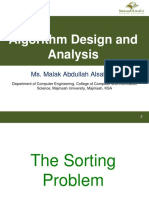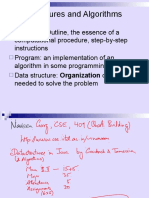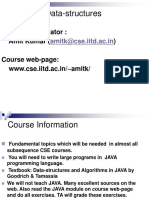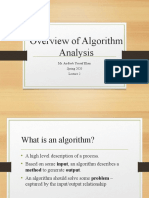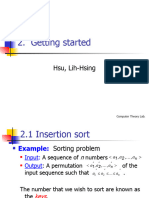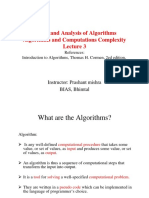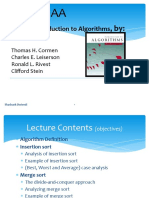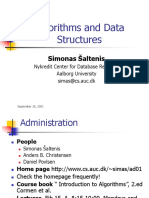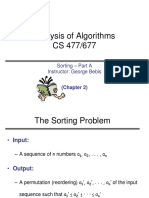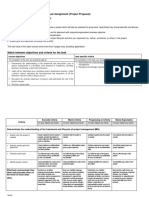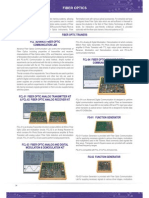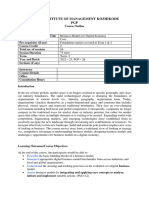0% found this document useful (0 votes)
61 views30 pagesGetting Started: Sun-Yuan Hsieh
This document provides an overview of insertion sort and merge sort algorithms. It discusses analyzing algorithms to predict resource requirements like time. For insertion sort, it analyzes the worst-case running time, which is quadratic or O(n^2). For merge sort, it presents the pseudocode and illustrates how it works by merging two sorted subarrays into a single sorted array in O(n log n) time through a divide and conquer approach.
Uploaded by
陳柏志Copyright
© © All Rights Reserved
We take content rights seriously. If you suspect this is your content, claim it here.
Available Formats
Download as PPT, PDF, TXT or read online on Scribd
0% found this document useful (0 votes)
61 views30 pagesGetting Started: Sun-Yuan Hsieh
This document provides an overview of insertion sort and merge sort algorithms. It discusses analyzing algorithms to predict resource requirements like time. For insertion sort, it analyzes the worst-case running time, which is quadratic or O(n^2). For merge sort, it presents the pseudocode and illustrates how it works by merging two sorted subarrays into a single sorted array in O(n log n) time through a divide and conquer approach.
Uploaded by
陳柏志Copyright
© © All Rights Reserved
We take content rights seriously. If you suspect this is your content, claim it here.
Available Formats
Download as PPT, PDF, TXT or read online on Scribd
/ 30







